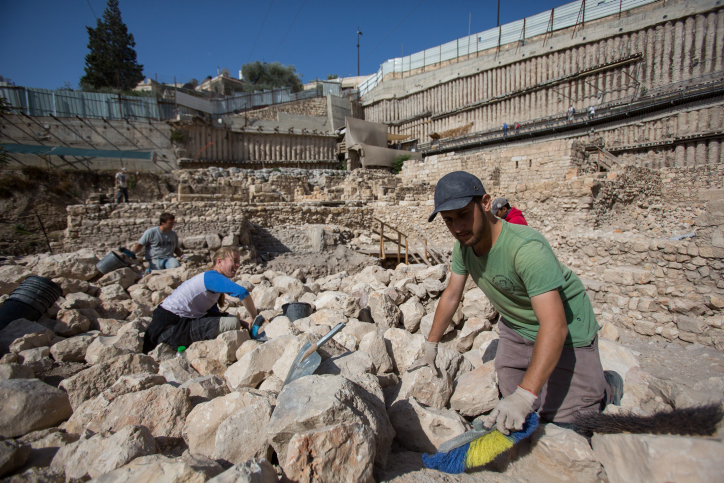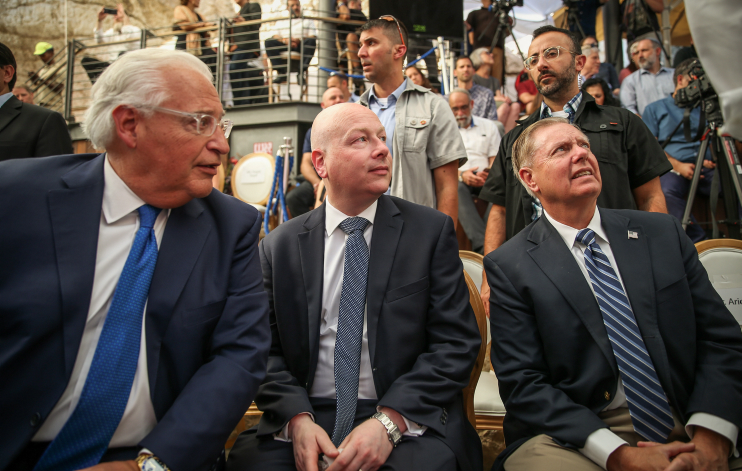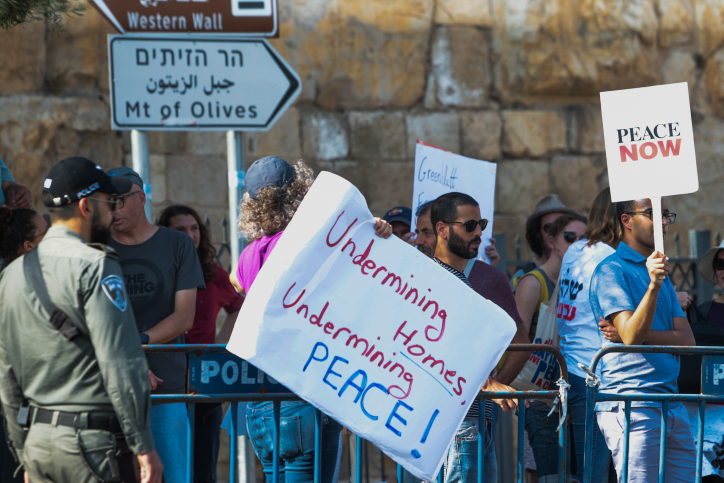The inauguration of a supposed ancient Jewish ‘Pilgrimage Road’ by Ambassador David Friedman and White House envoy Jason Greenblatt is a reminder that archeology is never as neutral as some would like to believe.
By Chemi Shiff and Yonathan Mizrachi

We tend to think of archeology as a neutral discipline. Archeologists dig up artifacts, date them, and try to build a timeline to better understand the history of a particular place or people.
Last week’s inauguration of Jerusalem’s “Pilgrimage Road” by U.S. Ambassador to Israel David Friedman and White House envoy to the Middle East Jason Greenblatt is a reminder that archeology is never as neutral as some would like to believe. According to archaeologists, the route was taken by Jewish pilgrims as they ascended to the Second Temple some 2,000 years ago.
For Palestinians, the tunnel lies directly below the neighborhood of Silwan, long coveted by Israeli settlers who are actively working to Judaize the area.
When it comes to archeology in Jerusalem, it seems everyone prefers to overlook the elephant in the room: how can any archaeological site, especially one with so many layers of history, be held up as proof of one ethno-national group’s exclusive claims?
Doron Spielman, vice president of the settlement organization Elad, which funded the excavations and will manage its archaeological site, told Jerusalem Post that “this place is the heart of the Jewish people and is like the blood that courses through our veins.” Commenting on the importance of the finds, Greenblatt stressed that “archaeology doesn’t shape historic landscape,” but rather is focused on the “excavation… and analysis of artifacts/physical remains.”

Greenblatt’s sentiment transcends political differences between left and right. After all, archaeology has long been used by many societies to cement their ideologies as an inseparable part of the landscape. This, of course, is not to say that archaeology cannot be used to discern between different cultures. Yet, in most sites that have been inhabited by countless cultures over the centuries — and especially in multi-layered places such as Jerusalem — the archaeological record usually reveals a story of complex relations between the various cultures that resided in any specific area.
While there is no question that Jews lived in the area surrounding the Pilgrimage Road in numerous periods, excavations have revealed that the area had been continuously inhabited for thousands of years before and after the Roman Period (referred to in Israel as the Second Temple Period), during which the route was first built.
Moreover, while representatives of Elad are confident that this road was taken by pilgrims on the way to the Second Temple, many archaeologists are not. The available evidence calls into question Jewish exclusivity over the site. Yet, to date, no report on the data accumulated from the excavation has been published. Without this data, any interpretation of the site’s history must be viewed as conjecture rather than fact.
Of course, the non-Jewish part of the story has yet to be told. When walking through the City of David archaeological site, one will learn mainly about its Jewish heritage. One must wonder about the fact that the Pilgrimage Road was excavated as a horizontal tunnel, a highly-contested archaeological method of excavation, preventing the ability to differentiate between the strata at the site.
Moreover, the tunnels allow visitors to walk through the village of Silwan without once seeing any Palestinians or coming to terms with the political implications of Elad’s archaeological enterprise on Jerusalem. Thus, excavations in the tunnel may be seen as yet another step in the appropriation of what Friedman and Greenblatt refer to as the “truth” of Silwan’s history, as the excavation itself – and not only the interpretation of the dig – ignores and destroys the layers below and above this route.
When asked about the importance of the Pilgrimage Road, Friedman claimed that it “brings truth and science to a debate that has been marred for too long by myths and deceptions,” explaining that the findings “bring an end to the baseless efforts to deny the historical fact of Jerusalem’s ancient connection to the Jewish people.” Friedman and Greenblatt added that any viable peace resolution with the Palestinians must be based on “the truth.”

However, like so many before them, it seems that the quest for the truth through archaeology manifests in justifications for nationalist agendas rather than attempts to build bridges between people.
In their quest for a convenient truth, nothing is easier for Friedman and Greenblatt than to overlook the complex historical story of Silwan, the Pilgrimage Road, and the violence this area has suffered due to both Israelis and Palestinians using archaeology as a zero-sum game. Instead of monopolizing a single nationalist narrative, perhaps it would be better for leaders on all sides to create an environment that is inclusive of the many narratives the landscape holds.
Chemi Shiff and Yonathan Mizrachi are members of Emek Shaveh. An Israeli NGO that working to protect ancient sites as public assets that belong to members of all communities, faiths and peoples.
